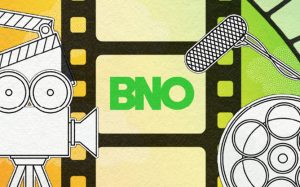
Get ready for a tsunami of new technologies.
For decades, Mastercard CMO Raja Rajamannar has been fascinated by marketing—from the elements of logos and product design to agents of disruption. As he rose through the ranks in C-level roles for companies such as Anthem and Humana, he noticed that marketing, like innovation, happens in distinct paradigms and stages of evolution. At the 2021 ANA B2B Marketing Conference earlier this year, he presented his theory of paradigm shifts in the marketing landscape, “A New Framework for B2B Marketing.” Here are the five paradigms:

Marketing in the first paradigm was product-centric—with the push to make the best product, package it attractively, and offer the greatest value, price, and availability.

Behavioral sciences created the second paradigm, when companies recognized that people make purchase decisions based on emotion and not rational thought. As radio and TV campaigns shifted the focus from products to feelings, few were immune to the happiness, envy, protectiveness, and FOMO (fear of missing out) that were evoked as compelling reasons to buy a product or choose one brand over another.
In the mid-1990s, the advent of the internet and data analytics brought us to the third paradigm with precision marketing that allowed you to optimize your mix and measure your ROI.
In 2007, two major technological breakthroughs brought us to the fourth paradigm: Facebook was scaled, ushering in a new era of social media, and the iPhone was born. Suddenly smart, connected mobile devices were everywhere and physically connected to us nearly 24/7. Platforms like Facebook, Instagram, and TikTok gave people a new way to connect to each other—while creating unprecedented ways for companies to connect with customers as well.
Each paradigm shift has resulted in a powerful disruption, with marketing having to re-invent itself every time.
According to Rajamannar, we are now on the brink of a fifth paradigm, with not two but dozens of technological innovations forcing us to change the way we think about marketing and connecting. “We are at the verge of a massive deluge of technologies,” he says.
In his book, Quantum Marketing: Mastering the New Marketing Mindset for Tomorrow’s Consumers, Rajamannar points out that a “tsunami” of new technologies is coming at us, including artificial intelligence (AI), virtual reality, augmented reality, robotics, blockchains, 3D printing, drone delivery, and those self-driving, autonomous cars.
AI, with its ability to gather and process data in real time and deliver actionable insights, will be the most powerful. Every single aspect of the marketing and advertising value chain will be enormously impacted by AI, which is already being used to create original content, from writing articles to creating music.
The widespread adoption of these technologies will make old ways of marketing obsolete and push the demand for creative excellence to the forefront. The impact of the fifth paradigm on B2B marketing will be profound.

We believe that in the face of these technologies, the need for powerful creative to engage, inspire, inform, and shape perceptions and experiences will be greater than ever. There will be an increased demand for striking and original thinking that simplifies the complex and has universal appeal.
While many agencies are still focused on traditional B2C and B2B approaches, we will see a shift to a more personalized and intimate connection that’s less about consumers and more about humans. The closer contact will be made possible by emerging and new technologies. Creative will move to a more B2H or even B4H (brands for humans) mindset, tapping into the emotions that will move our audiences to action.
Business-to-human interactions are at the heart of what we do at Baldwin & Obenauf. We believe in the power and the promise of human inspiration, and we’re comfortable with creating and innovating at the forefront of emerging technologies. We’re ever mindful that humans respond to stories and storytelling, so no matter what the tech or the paradigm, we remain storytellers—your storytellers. Reach out today to see how and where your story can evolve with us in the fifth paradigm.






